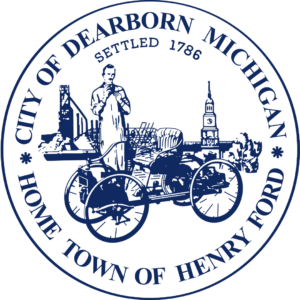Population
109,976

109,976

Short term: quicker response times, proactive flood mitigation
Long term: longitudinal data can help target areas for future investments for flood prevention
Since 2014, Dearborn residents have experienced not one, not two, but three hundred-year storms. With the changing climate, the frequency of these storms is only expected to increase.
While the floods devastated personal property, they also highlighted how the cost to the City and residents went far beyond the price of cleanup. Response times from emergency personnel, city staff, and aid workers were delayed as there was no clear way to determine the locations or extent of the flooding in real time. City officials were clear: lost time is far too costly when it comes to flood response.
So, what is our solution to curb delays and strengthen the City’s flood mitigation efforts? Information. Specifically, providing the City with clear, actionable, and real-time data on rainfall and river conditions through a network of water-level sensors created by our local program partner, Hyfi.
The sensors, installed near critical assets and historic flood points throughout the city, use sonar to measure water depth and transmit the readings to a dashboard — answering the questions of “Where?” “When?” and “How much?” instantly. Dearborn’s dashboard will be customized to alert city staff when water levels reach warning thresholds and illustrate impacts with real-time flood maps, providing emergency response teams with ample time to plan new routes, move equipment to higher ground, and share early warnings with residents.
While this deployment doesn’t prevent flooding — that will require significant infrastructure investment along the entire watershed — it will provide the city with more information for targeted short- and long-term actions for flood response. With this information comes time: time to make critical emergency decisions, time to allocate toward other activities, and time to plan for additional investments that may reduce flooding impacts over time. Our work aims to complement the city’s existing flood mitigation efforts and highlight the benefits of a proactive, rather than reactive, approach to flood management.
The average person takes about 20,000 breaths per day. That’s 20,000 opportunities to replenish your lungs so you can laugh, sing, play, or simply take in your surroundings with ease. Unfortunately, for many Michigan residents, those breaths also represent 20,000 opportunities for harmful pollutants to enter the body.
“What is really important is that we are made aware of the quality of breaths we take as community members,” said Darren Riley, cofounder and CEO of JustAir, a Michigan-based environmental tech company. “Myself, being a resident and asthmatic, can I be able to walk out the door and be confident? Also, when things are not so good, how do I navigate the world, how do I adjust to make sure I’m protecting myself and my health?”
Riley’s observations and questions ring especially true in Dearborn. The economic foundation of the modern automotive industry is also home to one of the most polluted zip codes in the state. The health impacts of poor air quality spurred by nearby heavy industry and freeway traffic aren’t merely theoretical. Area residents — particularly children — experience substantially higher asthma rates than elsewhere in Michigan, and adult hospitalization levels are almost double that of the state average.
Dearborn’s Department of Public Health is working with MiNextCities and JustAir, to increase the quality of each breath for city residents. Building on the City’s existing air quality work, the partners recently launched a citywide air quality monitoring network to provide city leaders and residents with the information they need to better protect the community from airborne pollutants.
Unlike regional data collected by regulatory-grade monitors, this citywide network of sensors captures disparities at the neighborhood-level, and a public dashboard and alert system gives residents local air quality updates.
Neighborhood-level monitors collect data that can help residents be more proactive and protect themselves while also empowering the City to make policy changes like anti-idling ordinances, or allocating resources to disproportionately impacted blocks, and other air quality–mitigation strategies.